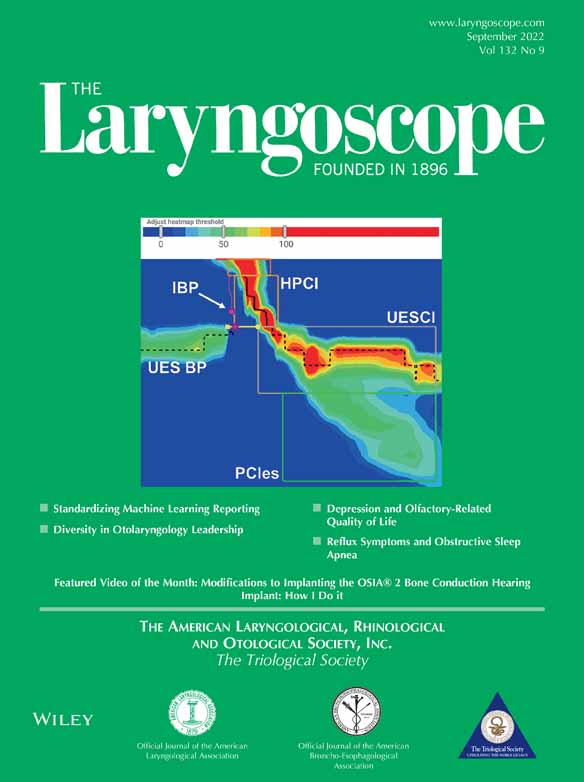Skin Color Match in Head and Neck Reconstructive Surgery
Editor's Note: This Manuscript was accepted for publication on November 6, 2019.
This manuscript is an accepted Triological Society Thesis.
The authors have no funding, financial relationships, or conflicts of interest to disclose.
Abstract
Objectives/Hypothesis
To quantify the degree of color match achieved during microvascular facial reconstruction, and to describe a novel technique for improving reconstructive skin color match. We hypothesize that split-thickness skin grafts (STSG) placed atop de-epithelialized free tissue produces better facial skin color match than free tissue with intact epithelium.
Study Design
Cross sectional photographic study of reconstructed facial skin color match.
Methods
Sixty-eight adults, who underwent head and neck reconstructive surgery, were divided into six categories based on cutaneous reconstructive technique: cervicofacial flap, radial forearm free flap (RFFF), fibula free flap, anterolateral thigh free flap (ALT), STSG over adiopofascial flap (STAFF), and STSG over myogenous flap (STMF). Averaged color samplings of the reconstructed defect and adjacent normal skin were taken from digital photographs. The color difference was calculated using the delta-E calculation. Blinded expert observers also rated the degree of color match. Nonparametric cohort contrast and correlation statistical analyses were performed.
Results
The mean delta-E's and 10-point Likert ratings for the ALT, fibula, RFFF, STAFF, STMF, and cervicofacial flaps were 11.6, 10.0, 7.7, 6.3, 8.8, and 4.7, and 5.1, 6.4, 2.4, 3.2, 2.7, and 1.1, respectively. Likert scale inter-rater correlation was strong, with coefficient = 0.80.
Conclusions
On average, STSG over de-epithelialized myogenous and adipofascial free tissue transfers produced a better color match than the skin paddles of donor sites, with the exception of the radial forearm donor site. Delta-E values obtained from photos correlated well with expert ratings of color match. This reliable technique for quantifying color match may be used in future studies.
Level of Evidence
3 Laryngoscope, 132:1753–1759, 2022




